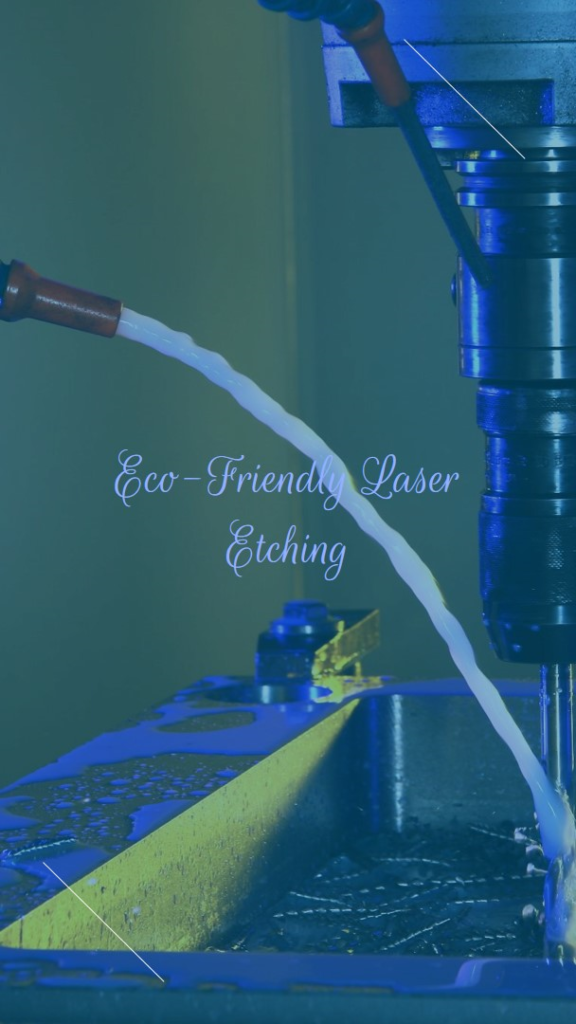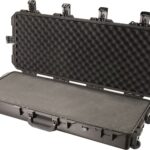As we step further into 2024, small to medium-sized businesses (SMBs) continue to seek innovative ways to produce branded merchandise that not only boosts their brand visibility but also aligns with increasing environmental concerns. Among the various technologies at the forefront, laser technology has emerged as a significant player in the production of promotional items. This article delves into the environmental impacts of laser etching technology in merchandise production and explores how these impacts are being addressed, particularly focusing on solutions that are accessible to SMBs.
Understanding Laser Etching Technology in Merchandise Production
Laser etching technology involves the use of laser beams to engrave, cut, or mark materials. Unlike traditional methods that require physical contact and often involve chemicals, laser engraving is a non-contact process. This method provides precision and versatility in designing detailed logos and text on various materials including metal, plastic, wood, and glass.
Environmental Impacts of Laser Technology
- Energy Consumption: Laser engraving machines require significant amounts of energy, especially when dealing with harder materials or intricate designs. However, advances in technology have led to the development of more energy-efficient models that reduce electricity usage by up to 30% compared to older versions.
- Material Waste: Traditional manufacturing methods often result in considerable material waste. In contrast, laser technology allows for precise cuts and minimal material surplus, thereby reducing waste generation. For instance, laser cutting of textiles has been shown to reduce fabric waste by approximately 10-15% compared to conventional cutting methods.
- Chemical Use and Emissions: Laser engraving eliminates the need for solvents, inks, and other chemicals typically used in printing and etching. This not only reduces the release of volatile organic compounds (VOCs) but also minimizes health hazards in the workplace.
Addressing Environmental Concerns in 2024
With environmental regulations tightening and consumer awareness on the rise, businesses are increasingly adopting green practices. Here are several ways in which the environmental impacts of laser technology are being addressed:
- Renewable Energy Integration: Many businesses are now powering their laser engraving machines with renewable energy sources, such as solar or wind power, significantly reducing the carbon footprint associated with merchandise production.
- Recycling and Reusing Scrap Materials: Innovations in material handling include systems that collect and recycle scraps produced during the laser engraving process. For example, offcuts from laser-cut metal or plastic are often repurposed or sent to recycling facilities.
- Improving Machine Efficiency: Manufacturers of laser equipment have introduced machines that are not only faster but also more energy-efficient. These advancements help reduce the overall energy consumption per unit of production.
- Eco-friendly Material Choices: Businesses are increasingly opting for sustainable materials like bamboo, recycled metals, and bioplastics for their promotional merchandise, which are more environmentally friendly and compatible with laser technology.
Advancements in Laser Technology for Reduced Environmental Impact
- Advanced Air Filtration Systems: Newer models of laser engraving machines come equipped with sophisticated air filtration systems that capture fine particles and pollutants generated during the engraving process. This technology ensures that the air quality within production facilities remains high and that harmful emissions are significantly minimized, contributing to a safer environment both inside and outside the production area.
- Life Cycle Assessment (LCA) Integration: Many manufacturers are now using Life Cycle Assessment tools to evaluate the environmental impact of their laser machines from production to disposal. This comprehensive approach helps in designing machines that are not only energy-efficient but also built from more sustainable materials, further reducing their environmental footprint over their lifespan.
- Automation and Precision: Automation in laser technology has seen significant advancements, allowing for more precise control over the engraving process. This precision reduces errors and reworks, thereby not only saving materials but also energy. Moreover, automated laser systems can optimize production schedules and material usage, leading to a more streamlined operation with reduced environmental impact.
Sustainable Business Practices Around Laser Technology
With the environmental benefits that laser technology offers, SMBs are encouraged to adopt broader sustainable practices in their operations:
- Sustainable Supply Chains: By choosing suppliers who also adhere to environmental standards, businesses can ensure that their sustainable efforts extend throughout the supply chain. This includes sourcing raw materials that are certified for their minimal environmental impact and working with logistics companies that use fuel-efficient transportation methods.
- Employee Training and Engagement: Educating employees about the importance of sustainability and how to operate new laser machines efficiently can lead to more environmentally friendly production practices. Engaged employees are more likely to take initiative in reducing waste and improving energy usage, which collectively contributes to a company’s green credentials.
- Community and Customer Engagement: Businesses can use their commitment to sustainability as a point of engagement with both the community and customers. By promoting their use of clean and precise laser technology, businesses not only enhance their brand reputation but also inspire others in the community to adopt similar practices.
Border Pad & Print’s Role
Border Pad & Print, recognizing the shift towards sustainable production, offers state-of-the-art laser etching technology solutions tailored for SMBs. Our services enable businesses to produce high-quality, environmentally friendly promotional merchandise that resonates with their eco-conscious consumers.
FAQs on Laser Etching Technology and Environmental Impact
- What materials can be processed with laser etching technology in an eco-friendly manner?
- Laser technology is versatile and can be used with various eco-friendly materials, including recycled plastics, bamboo, and sustainably sourced wood.
- How does using laser technology reduce environmental impact compared to traditional methods?
- It reduces material waste, eliminates the need for harmful chemicals, and lowers energy consumption due to improved efficiency.
- Can small businesses afford to implement laser technology?
- Yes, the cost of laser machines has decreased, and many models designed for small-scale operations are both affordable and cost-effective in the long run.
- Are there any government incentives for using eco-friendly technologies like laser engraving?
- Many regions offer tax incentives, grants, or subsidies for small businesses that invest in green technologies, which can help offset initial costs.
- What should businesses look for when choosing a provider for laser-engraved merchandise?
- Look for providers that use sustainable materials and energy-efficient technologies. It’s also beneficial to choose companies that have a clear commitment to environmental stewardship.
Also know about Mastering UV Inkjet Printing: Essential Tips and Best Practices
Conclusion
As we look towards a more sustainable future, laser etching technology stands out as a key tool for small to medium-sized businesses aiming to produce promotional merchandise. Its ability to minimize waste, reduce energy use, and avoid harmful chemicals positions it as an environmentally responsible choice for today’s market. By integrating eco-friendly practices, businesses not only contribute positively to the environment but also enhance their brand image among consumers who value sustainability. How is your business adapting to these green practices?
Stay tuned for more news and updates on Infinite Insight Hub!



